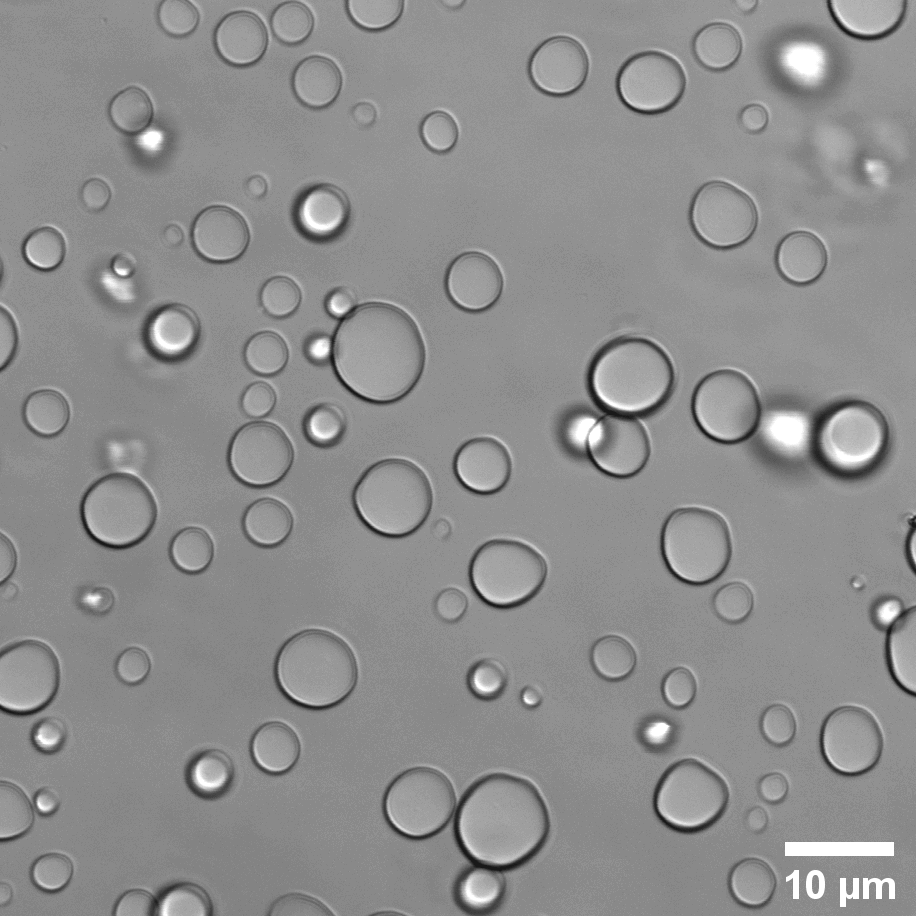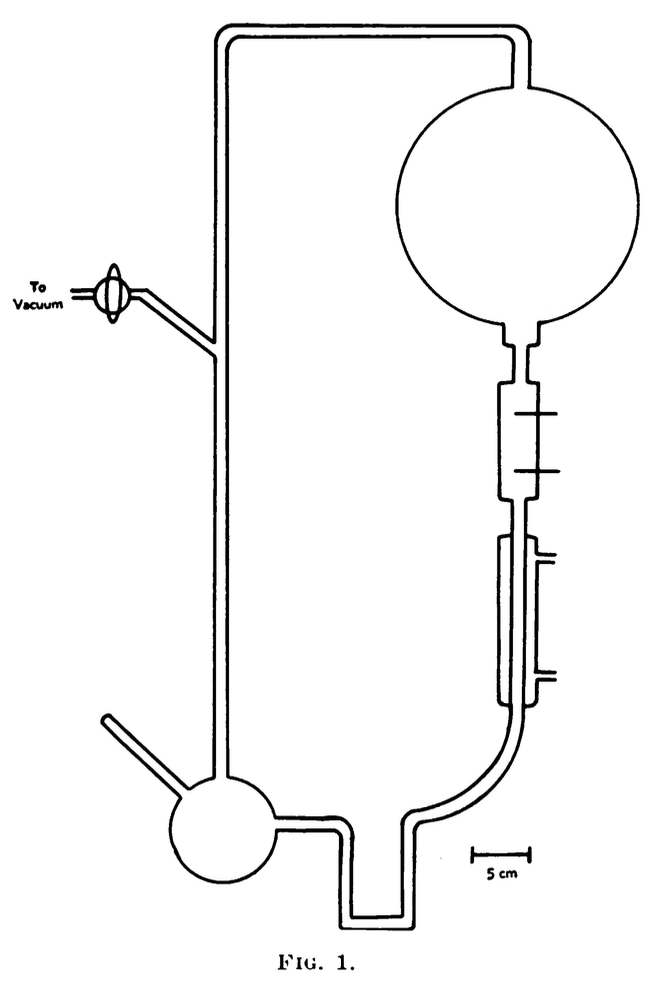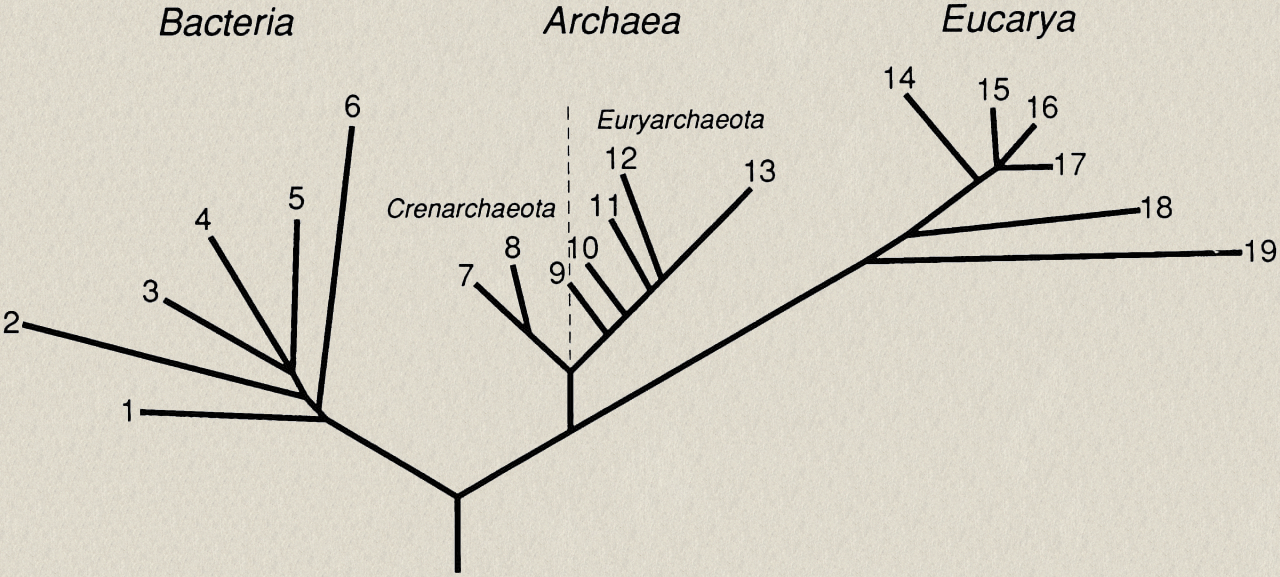Timeline: Origin of Life research
How did life come about? What matter are we most closely related to? The question of how life originated is older than science itself. It is human nature to want to know more about our biological past – right down to the origin of the first cells. Therefore, from an early age, people engaged in research into the origin of life in order to learn and understand how it all began and where living things in the world we know came from.
Before we start the journey through time to the origin of life, we would first like to address the question: What is life? Life is a chemical reaction, a very complicated one, but ultimately a chemical reaction in which energy is released. In all forms of life there is a central main reaction in the metabolism from which the energy for life is obtained. In humans, the main reaction is the burning of sugars in our mitochondria, the powerhouses of our cells. In all other forms of life, without exception, there is such a main reaction, which serves as an energetic drive for all life processes. In plants it is photosynthesis, the use of solar energy to form sugars from carbon dioxide (CO2). In fermenting cells, such as yeast, the main reaction is the breakdown of sugars into CO2 and alcohol (ethanol). Fermentation also releases energy (the sun‘s energy stored in the sugar). It is usually the case that the most important basic building blocks for biosynthesis in the metabolism are provided from the main physiological reaction at the same time.
The first non-religious theory was probably Aristotle’s. He believed that living things constantly originate from non-living matter. This theory is called spontaneous generation, and it was widely accepted until the 19th century. Nowadays we know that a particle of dust will not magically turn into a microbe or an insect, however it took over two millennia for scientists to prove it. An experiment by the chemist Louis Pasteur (1822–1895) in 1859 finally clarified this.


Charles Robert Darwin, born in Shrewsbury, England in 1809, was very interested in science and geology. In 1831 in the age of 22 he was given the opportunity to participate as a naturalist on the research ship HMS Beagle on a five-year expedition to South America that laid the foundation for Darwin’s later work. During the voyage, Darwin studied the geology, plants, animals, and fossils of various regions, including the Galápagos Islands. He observed similarities between the fossils of extinct species and living animals from the same region that could suggest a relationship. In addition, the similarities between bird species, which he had studied in particular on the Galápagos Islands, also aroused his interest and led him to his theory of habitat adaptation through variation and natural selection, through which he explained the phylogenetic development of all organisms and their division into different ones. In 1859, he published his theory of natural selection in his major work On the Origin of Species, which was immediately accepted by science. Charles Darwin died at his home in Downe, near London, in 1882 and was buried with honor in Westminster Abbey, London. Darwin’s major work On the Origin of Species was published in 1859. The publication was out of print within a very short time, so that new editions and translations into other languages were repeatedly published. In this work, Darwin proves his theory that animal and plant species change over long periods of time through natural selection and that all living things that exist today descend from a common ancestor. His teaching had a lasting impact on research into the theory of evolution.
Charles Darwin concludes Chapter IV of his most important publication, On the Origin of Species, with the following words:
»A buds give rise by growth to fresh buds, and these, if vigorous, branch out and overtop on all sides many a feebler branch, so by generation I believe it has been with the great Tree of Life, which fills with its dead and broken branches the crust of the earth, and covers the surface with its ever branching and beautiful ramifications.«

Although in Charles Darwin‘s (1809–1882) time no one could provide a satisfactory answer to the fundamental problem of the origin of life, his speculations about the habitat of the first organism, the „warm little pond“, paved the way to the first concrete field experiments many decades later. The ideas of Charles Darwin and Alfred R. Wallace (1823–1913) set the foundations of modern evolutionary biology. Their main idea differed from previous hypotheses. They investigated how species evolve through natural selection, starting from universal ancestors, and developed the theory of evolution through natural selection. Its main premise is that species adapt to their environment and that some individuals are better adapted than others. These individuals have a higher probability of surviving and reproducing. Less well-adapted individuals are more likely to die off. The advantageous adaptations are inherited by the offspring.
The environment forces living things to change. New species and life forms evolve from existing ones. Darwin recognized that all living beings that have ever existed on Earth descended from the one and the same ancestor – the universal common ancestor. At the time, these ideas were revolutionary. However, they did not explain how life on earth came about in the first place. Darwin left a clue to the mystery of the origin of life at a time when geochemical data for the distant past were scarce, if not unavailable. In Darwin‘s time, no experimental approach was rigorous enough to make progress on this question, and thus left most hypotheses to the mere taste of personal belief. To a certain extent this is still true today.

Darwin did not say much about the origin of life. However, he did think about it. In a letter to another scientist, he proposed life could have originated in warm little ponds from simple molecules (ammonia and phosphoric salts), in the presence of light, heat, electricity. According to Darwin, proteins would form first, and they would then undergo more complex changes. Even though he neglected to mention the element that provides the backbone of life – carbon, Darwin recognized that life likely originated from simpler compounds, that it required an energy source, and that it needed to happen in a confined space. Even today some scientists are still looking at warm little ponds as possible places where life on Earth could have originated.

Life arose from inanimate matter. Scientific theories of the origin of life must therefore offer viable and testable hypotheses as to where the reduced carbon compounds from which life evolved came from, but also where the energy required for them came from. When most people think of the origin of life, they immediately think of a kind of “primordial soup”. Today the term primordial soup theory is just as common as Darwin‘s theory of evolution. But there is one crucial difference: while the theory of evolution is correct in all essential aspects after 160 years, the theory of the primordial soup is outdated in all essential aspects after about 100 years.
The idea that life arose from a prebiotic primordial soup that covered the primordial earth goes back to the Russian chemist Aleksandr I. Oparin (1894–1980) and the British evolutionary biologist John B. S. Haldane (1892–1964). In essence, the primordial soup theory states that the first organic compounds were formed on the early Earth through the action of UV radiation on carbon dioxide (CO2), the nitrogen compound ammonia (NH3) and water. In the absence of living cells that could use these organic compounds as food, they accumulated into an oceanic mixture with the concentration of a thin broth. In this then the first macromolecules were formed, later the first cells that consumed the oceanic mixture (via fermentation: conversion of organic substances into acids, gases or alcohol).

Aleksandr Oparin‘s theory for chemical evolution may very well be the first systematic attempt for a theory for the origin of life, including data from geology, chemistry and biology. Oparin proposed that the molecules that make up cells could form from simple inorganic molecules under high temperatures with an energy source such as lightning or UV light. These molecules would group together in water, forming small spheres he called coacervates. He believed these were the first cells. Today there are still some scientists testing the coacervate hypothesis.
John Haldane had similar ideas to Oparin about what the early Earth looked like and what was required for life. He believed the oceans were like a big cooking pot where organic molecules (the molecules that make up living things) formed thanks to the energy from the sun. This is what he called the prebiotic soup.


From today‘s perspective, there is an insuperable problem with the primordial soup theory, which can be illustrated in a thought experiment: We take a can full of primordial soup. Good would be a chicken broth, a strong goulash soup or even better a solution of freshly crushed bacteria whose cell structure has been completely fragmented (it contains all the chemical building blocks that make up life). We seal the can sterile. We put the can at any temperature and wait any time. We take samples at intervals under sterile conditions to see if new life has emerged. From today‘s perspective, it is intuitively understandable that under no circumstances will new life form in this can full of perfect primordial soup. It becomes more difficult, however, with the question of why no new life is formed there. The reason is that the carbon, nitrogen, oxygen and hydrogen that make up our primordial soup are in chemical equilibrium; that is, the chemical contents of this can of primordial soup have already reacted. They have no chemical potential to react further because they are in – or very close to – equilibrium. You can also throw lightning into the can to counteract the equilibrium state, but the situation doesn‘t get any better: When struck by lightning, the temperature of the contents of the can rises within fractions of a second to temperatures that melt sand to glass, and the organic substances are not transformed into life, but into CO2.
The famous experiment by Stanley L. Miller (1930–2007) and Harold C. Urey (1883–1981) marked the beginning of the experimental era in origin of life research. The idea was to recreate reactions in the laboratory that could have happened at the origin of life. Ideally, complex molecules present in cells would form from simple compounds present in the environment of the early Earth.
The experiment was designed to test the prebiotic soup theory, and it was considered a success. Several molecules that are found in living cells were formed during the experiment starting from very simple compounds. Among the products there were some amino acids – the building blocks of proteins. The experiment proved organic molecules that are found in living cells could form from simpler inorganic compounds present in the early oceans and atmosphere. Today’s origin of life research is largely based on this fact.
Even so, this does not mean their experiment accurately recreated the origin of life. Nowadays scientists recognize several problems with the prebiotic soup theory.

The Miller-Urey experiment was first carried out by Stanley L. Miller (1893–2007) and Harold C. Urey (1883–1981) in 1953. It was used to simulate prebiotic syntheses (abiotic synthesis, chemical evolution) in an artificial primeval atmosphere. Suspected components of the primordial atmosphere – ammonia, hydrogen, methane and water – are exposed to electrical spark discharges that simulate lightning strikes. The gases condensed in the cold are then caught in a water trap (the “primeval ocean”), brought back into the primeval atmosphere by heating and again exposed to spark discharges. If the system is kept in the artificial conditions of the primordial atmosphere for more than a week, a complex mixture of organic compounds is formed in the aqueous phase, including a number of simple fatty acids, sugars and amino acids.
They showed that a mixture of the carbon compound methane (CH4), the nitrogen compound ammonia (NH3) and hydrogen (this is how people imagined the primordial atmosphere back then) simple organic compounds, but also important basic building blocks of life, can develop under simulated lightning effects. They found hydrocyanic acid (HCN), aldehydes, simple amino acids, oil and tar among the reaction products. Later attempts of this kind led to the synthesis of further amino acids and nucleic acid building blocks of DNA such as adenine and guanine.
The fact that Miller‘s first attempt to synthesize a primordial soup in the laboratory promptly succeeded was sensational. But in order for these building blocks to react further for further condensation and polymerization towards biological macromolecules, a mechanism was required by which they could be concentrated. One thought of drying tidal zones, adsorption on clay, the concentration in the ice, huge oil slicks, etc. Over time, an idea has spread that the Oparin-Haldane primordial soup theory is fundamentally correct based on Miller‘s experiment, only the details need explanation.
Miller and Urey‘s theory has serious weaknesses, especially with regard to the lack of an explanation for the polymerization of the formed monomeric building blocks of the biomolecules. The conditions selected in the experiment are also viewed critically from today's perspective. Methane and ammonia are both unstable in the atmosphere under UV radiation and may therefore have been absent or only present in small amounts in the Earth's early atmosphere. Consequently, the abundance of CO2 relative to CH4 suggests that amino acids were formed under different conditions than originally suggested by Miller and Urey in 1953.

In the early 1960s the division of life into prokaryotes and eukaryotes was established. Prokaryotes are simple organisms without a nucleus, like bacteria. Eukaryotes are made up of more complex cells with a real nucleus. All organisms we can see around us with the naked eye are eukaryotes, including us.
In 1977 Carl Woese and George E. Fox did experiments comparing genes for ribosomal RNA from very different organisms, and realized there was a particular kind of prokaryote that was very different from both bacteria and eukaryotes. They realized they had discovered a completely new kingdom of life – the archaebacteria (today known as archaea). Therefore, all life could be grouped into 3 kingdoms (today called domains): eukaryotes, bacteria and archaea.
In 1990 Woese drew a tree of life that showed the three domains, all stemming from the universal common ancestor of all life (LUCA – Last Universal Common Ancestor). Even though this was a great step forward in our understanding of life on Earth, this tree is not fully correct. Today we know the eukaryotes are not direct descendants of LUCA, rather, they originated from an archaeal cell and a bacterial cell in a process called endosymbiosis.

Alexander Rich (1924–2015) opened in 1962 the door to the so-called RNA world with his theory that life originated from an RNA molecule capable of making copies of itself. In the early 1980s, theories about the RNA world were decisively strengthened. Sidney Altman (1939–2022) and Thomas R. Cech (born 1947) discovered RNA molecules that can catalyze chemical reactions – ribozymes. RNA can carry genetic information, like DNA, but it can also push chemical reactions to happen faster (catalyze them), like proteins do.
In the cell genes contain the information which proteins to make. However, proteins that make reactions happen faster (enzymes) are necessary to form new DNA or RNA. This chicken and egg problem was thought to have finally been solved when ribozymes were discovered.
The RNA world hypothesis still has many supporters in the modern scientific community. However, we know it has some shortcomings, the greatest being the fact that no RNA that can make copies of itself has ever been discovered.

The RNA world hypothesis is part of the genetics-first view. The scientists who support this view believe that genes existed before metabolism (the chemical reactions that sustain life, provide energy and build up cells). The opposing view is called metabolism-first. Its supporters believe chemical reactions that provided the system with energy and building blocks had to exist before genes could. The theory for the origin of life at alkaline hydrothermal vents is the most famous and accepted metabolism-first theory. In the further course of the exhibition, the main focus will be on the origin of life at hydrothermal vents.
Today multiple theories on the origin of life are being tested in the laboratory, as well as with computational approaches, using simulations and evolutionary models, comparing genes and proteins between organisms. A more recent approach is based on studying large networks of interacting molecules or reactions that could have occurred on the early Earth – these are called systems approaches.



